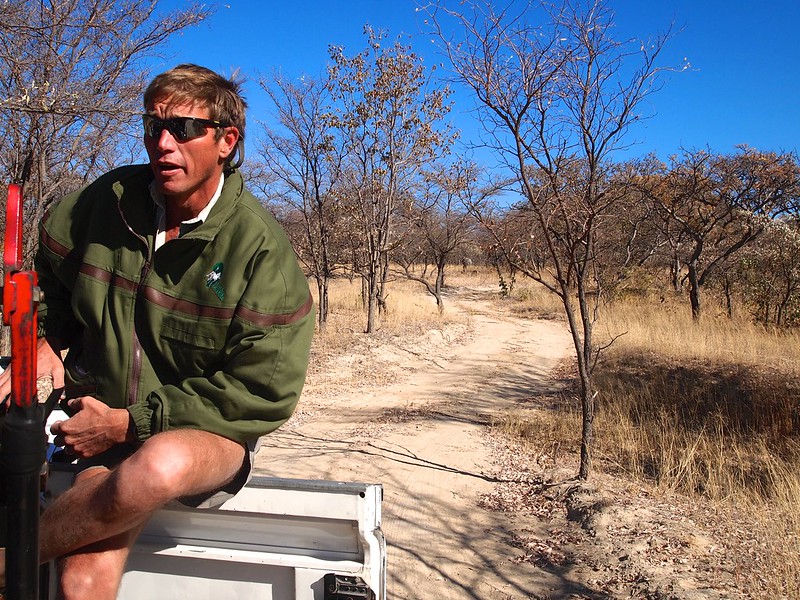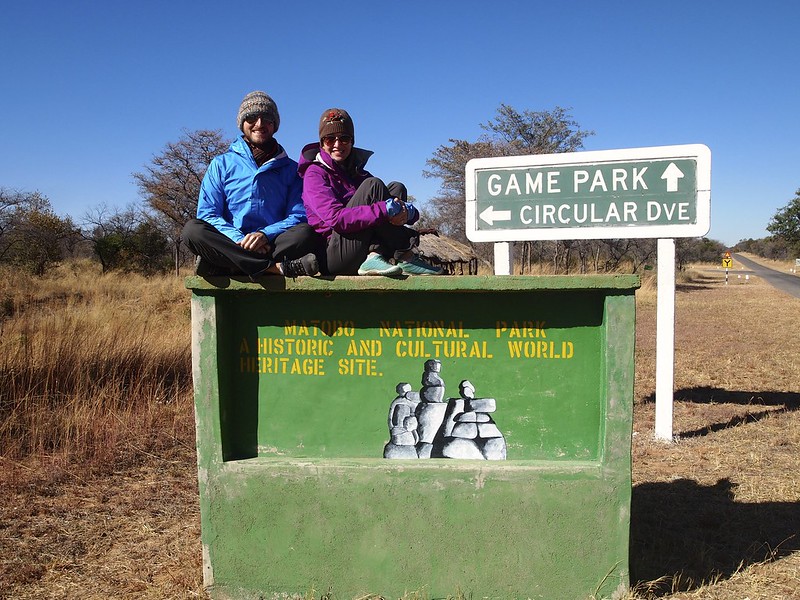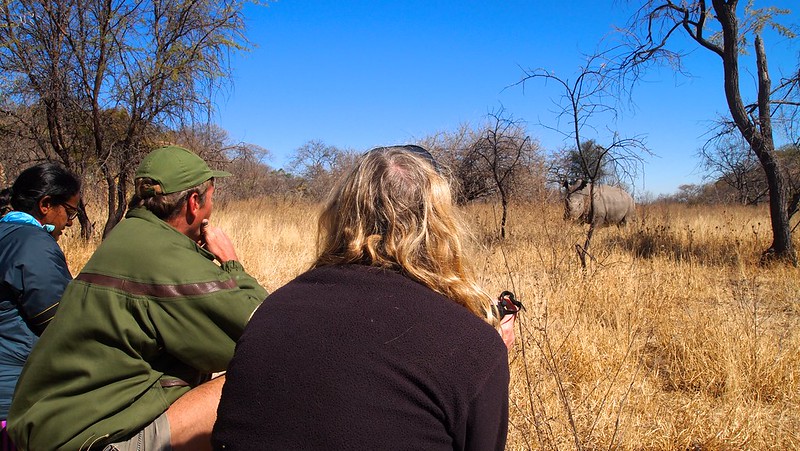In Zimbabwe, Tracking Rhinos with The Most Interesting Man In the World
We pride ourselves on not being “tour” people. We don’t like someone else deciding our schedule, our itinerary, and how we should spend our time. And an inept tour guide can leave a bad taste in your mouth, like a surly waiter at a nice restaurant. The day we spent at Matabo National Park in Zimbabwe, however, was one of of our best days not only in Africa, but the entire trip. And all credit goes to our tour guide, Ian Harmer, from African Wanderer. He is, The Most Interesting Man In the World.
Ian is a native Zimbabwean whose family was among the first settlers in what was formerly known as Rhodesia. He is a lanky, tan, youthful 40-something guy who could talk about paint drying and make it interesting. And he’s passionate about his work like no one else I’ve ever met. His life’s work is the plight of the African rhino. This species is being decimated due to Chinese demand for rhino horn, an alleged cure for male impotence in traditional medicine. The saddest part, which I didn’t know, is that rhino horn is like a fingernail. You can cut it off, it will grow back, and you don’t need to kill the rhino to get it. But poachers kill them anyway. Ian’s in favor of legalizing the horn trade in order to regulate it and make poaching less financially rewarding. You can read more about this complex issue here.

We started the day with tracking rhinos — on foot! Ian followed tracks, spoor, and who knows what else to get us fairly close to a white rhino. We crouched down in the brush and the rhino actually lumbered over to about within 20 feet of us! It was lucky that we saw one. Ian said that rhino numbers in the park are down by 75 percent in just two or three years. There are now only 8 white rhino in the entire park.
In between other lessons on botany, history, astronomy, and the decline of the tourism industry in Zimbabwe under Robert Mugabe (the park was eerily empty), the rest of the day included shopping for local crafts, a yummy homemade lunch, and visiting 30,000-year old San Bushmen cave paintings. The plight of the African Bushmen is another passion of Ian’s. He gave a fascinating, emotional lecture on these nomadic hunter-gatherers, how they believe they can “jump time” in trances, and Sirius (the “dog star”), which is worshipped by the Bushmen and other primitive cultures around the world. Ian clearly thinks they are a gentler, more civilized set of people than the general populace. They only take what they and their family need from the land and have no concept of personal property ownership. The cave paintings were stunning — 30,000 years after someone painted it, I could look and say, “Oh, that’s a giraffe, that’s a leopard.”
We ended the day at a local village where Ian knew the local chief, Pounda. Pounda came to meet us decked in a loincloth made from a leopard he killed 50 years ago. He showed us his scars from his fight with that leopard, the ancient grain jars hidden in the hills behind the village, and how his life was once saved by a white man. “Thank you, white man!” He exclaimed more than one. Several of Pounda’s children have died of AIDS, and he’s now raising about 13 of his grandchildren. Some of those kids put on a dance for us before we left. As you can see, we even showed them some moves of our own!









